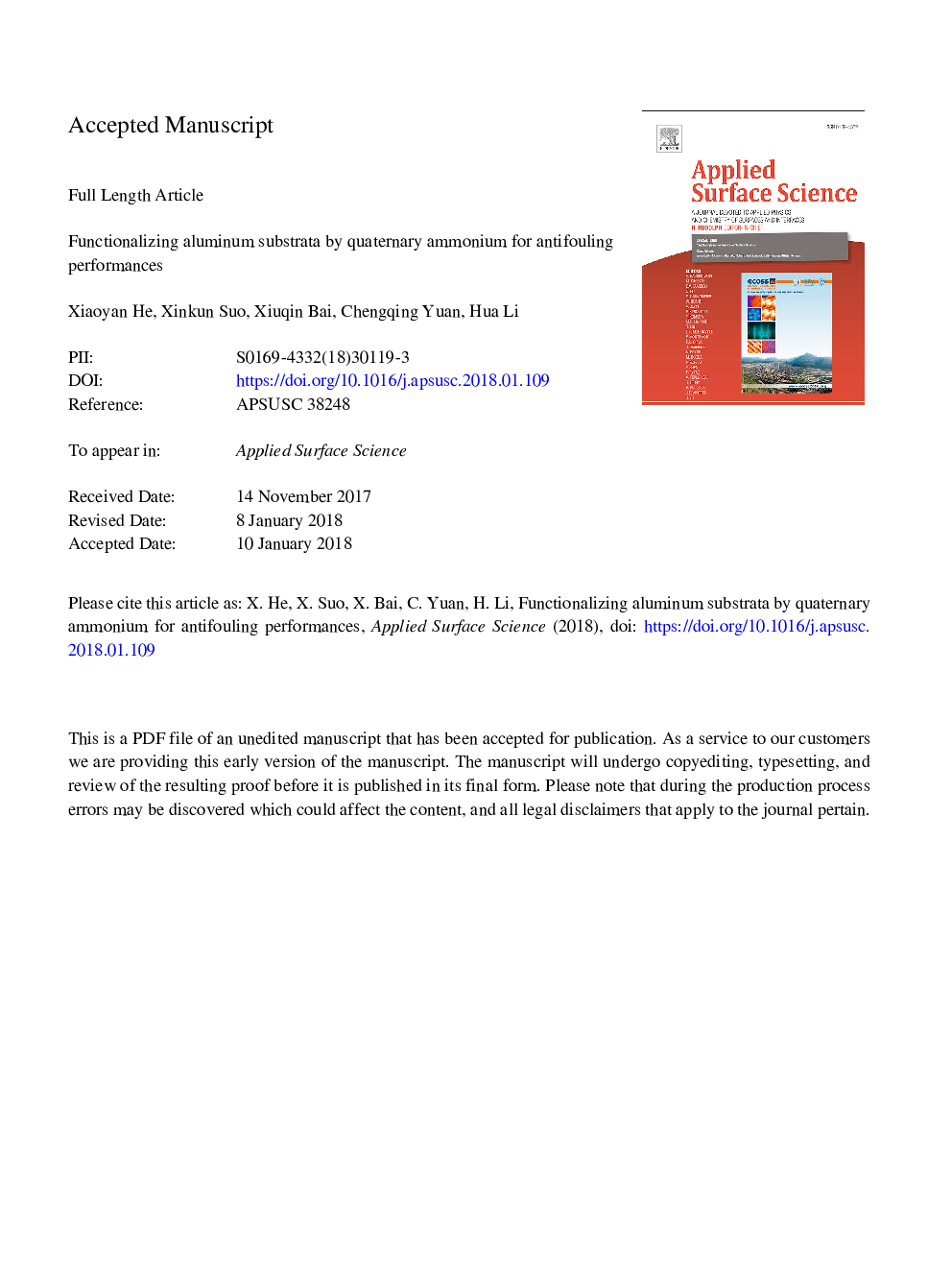| Article ID | Journal | Published Year | Pages | File Type |
|---|---|---|---|---|
| 7835228 | Applied Surface Science | 2018 | 24 Pages |
Abstract
Due to the great loss induced by biofouling, developing new strategies for combating biofouling has attracted extensive attention. Quaternary ammonium salts are potent cationic antimicrobials used in consumer products and their use for surface immobilization could create a contact-active antimicrobial layer. Here we report the facile preparation of a contact-active antifouling coating by tethering polyethyleneimine (PEI) onto flat/nanostructured aluminum surface by hydrogen bonding between PEI and AlOOH. Quaternized PEI (QPEI) is obtained through quaternization reactions. Biofouling testing suggests excellent antifouling performances of the samples by declining the adhesion of 95% Phaeodactylum tricornutum and 98% of Chlorella pyrenoidosa. The antifouling properties of PEI/QPEI are attributed predominately to their hydrophilic and antimicrobial nature. The technical route of PEI/QPEI surface grafting shows great potential for modifying marine infrastructures for enhanced antifouling performances.
Related Topics
Physical Sciences and Engineering
Chemistry
Physical and Theoretical Chemistry
Authors
Xiaoyan He, Xinkun Suo, Xiuqin Bai, Chengqing Yuan, Hua Li,
